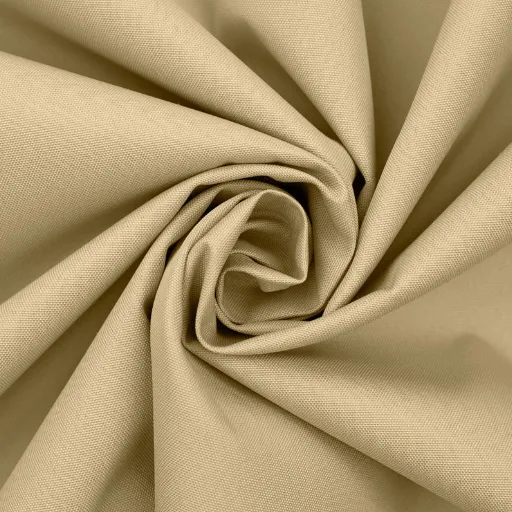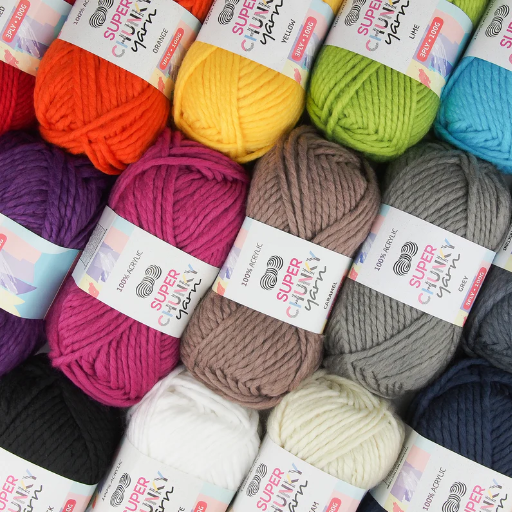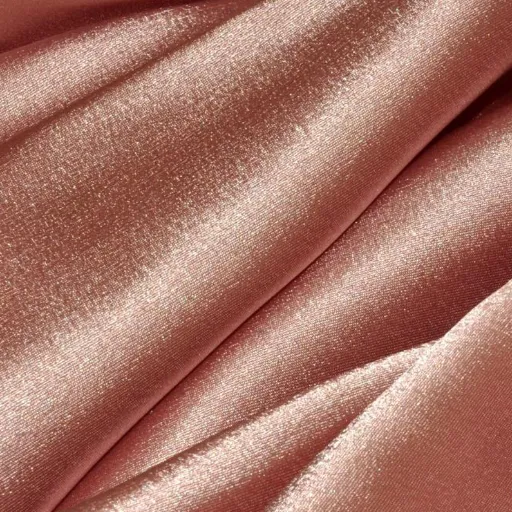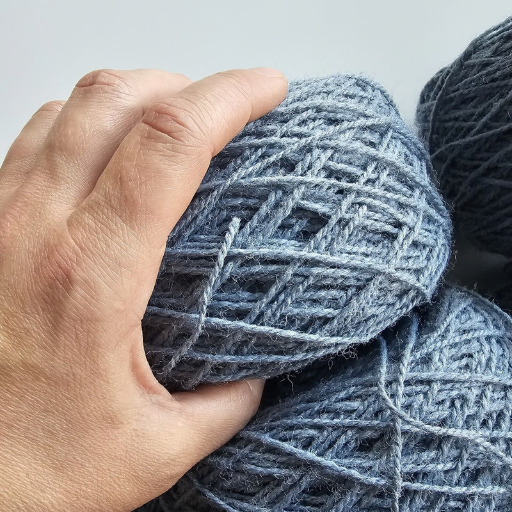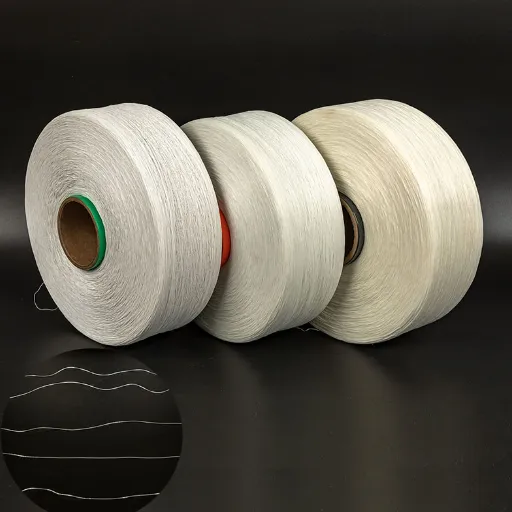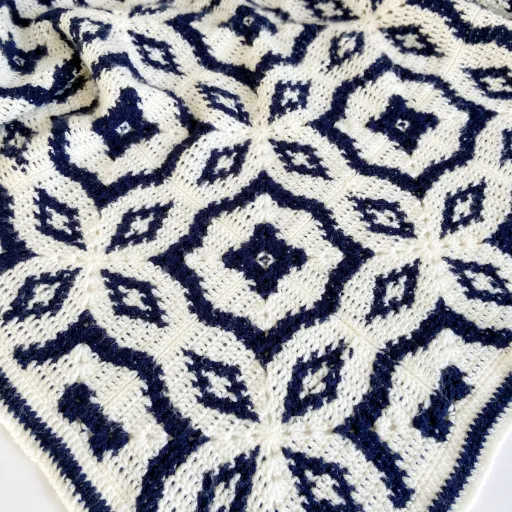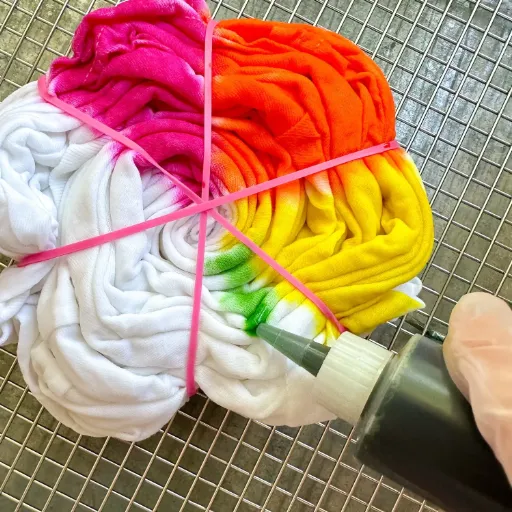One of the most popular and versatile synthetic fibers, acrylic yarns seem to dominate the crafting and textile worlds. Have you ever wondered how this durable and vibrant material is manufactured? Acrylic yarns offer a great deal of excitement in terms of their manufacturing process, which begins with raw chemical compounds and culminates in soft, colorful yarns used for knitting, crocheting, and weaving. This article will reveal the detailed, step-by-step production process of acrylic yarn, explaining the science and technology behind it. Whether you’re an enthusiast curious about the stuff your latest project is made of or just keen on synthetic fiber production, this guide opens up the doors for a fascinating peek into the acrylic yarn-making world.
Introduction to Acrylic Yarn
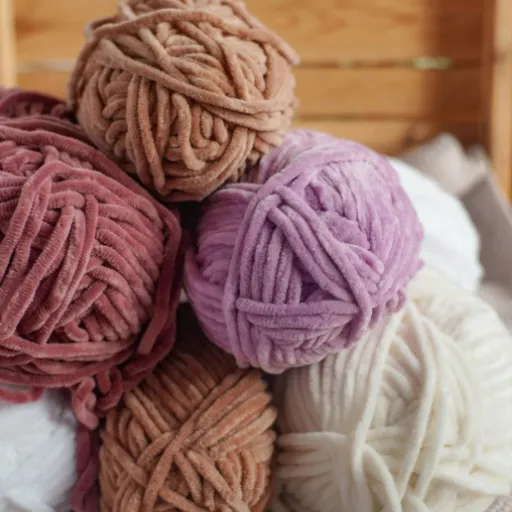
Acrylic yarns refer to synthetic fibers produced from a polymer called acrylonitrile. This is a strong selling point for textile use, offering the option of inexpensive materials, versatility, and practicality. Unlike natural fibers—such as wool or cotton —the acrylic yarns are synthetic, designed to impart warmth and softness just like natural fibers do. They are lightweight, whereas natural fibers are heavier for similar textiles; also, they do not allow moth attacks, mildew development, or shrinkage. Mostly knitters, crocheters, and weavers use acrylic yarn. Given that color treatments are easy, this is a versatile product to work with for many creative crafts.
What is Acrylic Yarn?
Acrylic yarn is a synthetic fiber produced from polyacrylonitrile through a chemical polymerization process. Acrylic yarn, being both inexpensive and durable, experiences high demand in the textile and craft industries. It has become a favorite because it can mimic the properties of natural fibers, particularly wool. Still, it has been upgraded to resist wear and tear, pest attacks, and various environmental conditions. Acrylic yarn products also withstand machine washing, dry quickly, and retain their color for an extended period, making them a low-maintenance fiber suitable for almost any project. It is easy to handle and one of the most affordable yarns available, making it a popular choice for knitting everything from warm blankets to trendy clothes.
Common Uses of Acrylic Yarn
Knitting & Crochet
Sweaters, scarves, hats, and gloves are popular due to their soft texture and warmth.
Home Décor
Bright-colored blankets, pillows, and rugs that do not fade
Amigurumi
Small stuffed figures with a hardness that keeps shapes intact
Acrylic yarn has long been regarded as a superior option due to its versatility and durability. Final users consider it a nice choice due to its applications. For both new crafters and experts, it ultimately becomes their favorite: affordable, attractive, and easy to care for. Green means more life for acrylic yarn in all types of craft projects.
Raw Materials for Acrylic Yarn Production

The primary chemical ingredient of acrylic yarn is a synthetic polymer called polyacrylonitrile, derived from petrochemical sources, such as crude oil and natural gas. The process, in brief, involves treating raw materials such as crude oil and natural gas to produce acrylonitrile, considered the key monomer of this polymer. Sometimes, other raw materials such as stabilizers or dyes are added to the polymer to impart durability and attractive color, respectively, to the yarn. These materials ensure the production of high-quality acrylic yarn, which has a wide range of applications in crafting and textile work.
Primary Components of Acrylic Fiber
| Component | Percentage | Purpose |
|---|---|---|
| Acrylonitrile | At least 85% | Makes fiber light, breathable, and resilient |
| Vinyl Acetate | Variable | Improves elasticity and softness |
| Methyl Acrylate | Variable | Enhances weather resistance |
| Stabilizers | Small amounts | Resist environmental factors |
| Dyes | As needed | Provide brilliant and durable colors |
Together, they constitute a versatile fiber used widely in clothing, upholstery, and industrial applications.
Source of Acrylic Yarn Materials
In reality, acrylic yarn materials are primarily made from petroleum-based precursors, specifically the polymerization of acrylic acid. The said raw material is a derivative produced during the refining process of petrochemical industries. This makes oil and natural gas the primary source. Hence, acrylic fiber manufacturers in countries with a large refinery-based oil industry, such as the US, China, and India, hold an important position. Systematic consideration of sustainable development necessitates research into the development of bio-based acrylonitrile, thereby reducing the dependence on fossil fuels while maintaining the same quality and performance standards.
The Production Process of Acrylic Yarn
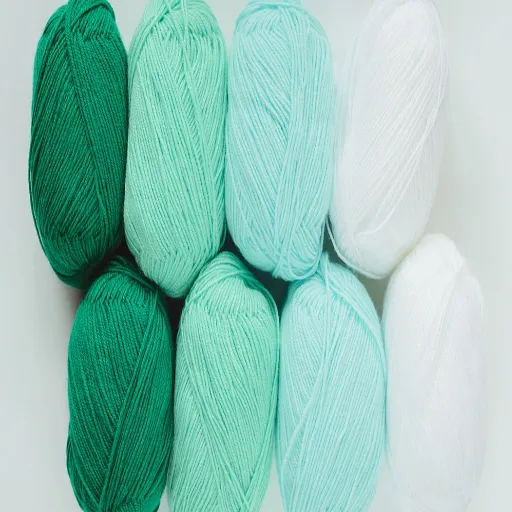
In the production of acrylic yarn, acrylonitrile, the primary raw material, is first created from fossil or bio-based feedstocks. Through polymerization, acrylonitrile is converted into polyacrylonitrile, a polymer with very long chains. The polyacrylonitrile is then dissolved in a liquid solution, which is extruded through tiny holes called spinnerets, forming the delicate fibers. The fibers are solidified either by air or immersion in a liquid, depending on the chosen process. When solidified, the fibers are then drawn, washed, and crimped to give them texture and strength. Finally, the fibers are dyed and spun into yarn, which is then ready for use in textiles. This method provides the product with the strength and flexibility that are key features of acrylic products.
Step 1: Polymerization
Polymerization is a chemical process in which monomers are joined together to form polymers of long chains, the fundamental material of acrylic fibers. The process typically begins with the use of acrylonitrile monomer, which may be combined with other comonomers to modify the product’s characteristics. Polymerization is then initiated by the introduction of free-radical initiators, causing the monomer to combine and form a highly stable and durable polymer chain. This is a key step, as it determines the molecular arrangement and the properties, such as strength, elasticity, and environmental resistance, for which acrylic fibers are used in various applications within the textile industry.
Step 2: Creating the Spinning Solution
To prepare the spinning solution or dope, the polymer obtained from polymerization is dissolved in a selected solvent such as dimethylformamide (DMF) or dimethylacetamide (DMAc). This step converts the polymer into a fluid state, allowing it to be extruded into fibers during the spinning process. The viscosity and concentration of the spinning solution critically determine the quality and uniformity of the fibers obtained. The solution is carefully optimized through more refined techniques and precise analysis to achieve the best results with improved utility across the broadest variety of textile products.
Step 3: Spinning Through Spinnerets
The spun fibers are obtained by forcing the prepared polymer solution through spinnerets. Spinnerets consist of tiny holes that are precisely manufactured to maintain the fiber’s uniformity and shape, as needed for their end use. Using the latest data from advancements in technology and research, manufacturers can now optimize fiber properties for strength, elasticity, and versatility. This step determines the structural integrity of the fibers, enabling them to be adapted to various applications, such as fashion, aerospace, and medical textiles.
Step 4: Stretching and Texturizing
Stretching and texturizing are crucial steps that significantly impact the ultimate performance and appeal of synthetic fibers. In the stretching process, fibers are elongated to align their molecules, thereby attaining maximum tensile strength and durability. Texturizing, on the other hand, imparts crimp or bulk to fibers, making them elastic, soft, and insulating in nature. Such fiber modifications are determined by sophisticated machinery and data-driven approaches to fulfill a set of defined industrial specifications. The gain in versatility during this step helps gain acceptance and makes these fibers available for uses ranging from breathable sportswear to aerospace components that demand both functionality and comfort.
Step 5: Drying, Crimping, and Cutting
Dryer operation, crimping, and cutting are interlinked processes that occur during the latter stages of fiber production. Following extrusion and modification, the fibers are dried using modern thermal or vacuum drying systems to ensure that no moisture remains, allowing the following process to proceed correctly. The crimping process imparts a texture to the fibers and establishes their flexibility by using rollers or presses with mechanical operation. Practically, crimping renders the fibers stronger and better suited for work, such as weaving or blending. Cutting the fibers to the required lengths, depending on whether they are staple or filament, and for the specific usage as either textile or industrial, is the final step. All processes are carried out under strict quality control to ensure the best possible product.
Step 6: Converting to Yarn
Once fibers have been processed, spinning must be done to combine these fibers into a continuous strand. There are different ways of spinning, including traditional ring spinning, open-end spinning, and air-jet spinning, with each process being ideal for certain types of fiber and yarn characteristics. From a contemporary perspective, the step of yarn formation is marked by machinery and moving parts, which provide precision, consistency, and speed. Thus, in modern-day fiber processing, yarn can be made fine and tailored for use in either fine textiles, sturdy industrial fabrics, or high-performance materials.
Environmental Impact of Acrylic Yarn
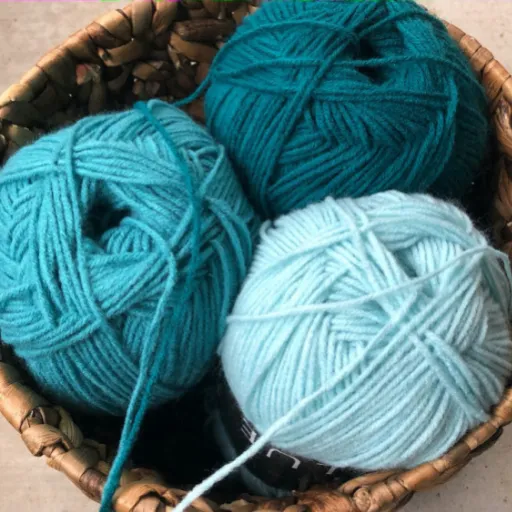
The environment bears a significant impact due to the production and disposal of acrylic yarn. Acrylic is a synthetic material with petrochemical origins, which contributes to emissions of greenhouse gases during its manufacture. Secondly, acrylic fibers do not degrade within their period of biodegradability, thereby residing in landfills for decades and contributing to plastic pollution. Moreover, these acrylic fabrics can release microplastics into the waterways, posing hazards to these aquatic ecosystems. These acrylic yarns offer versatility and durability, but they also pose ecological concerns, necessitating further research into sustainable options for disposal.
Challenges of Acrylic Yarn Production
- Environmental Considerations: Recent data indicate that consumers are increasingly seeking ecological products, suggesting an increased awareness of the environmental pressure posed by synthetic fibers
- Carbon Footprint: The carbon footprint of producing acrylic yarn is quite substantial due to the fossil fuels used in its creation.
- Industry Innovation: With rising international pressure to reduce greenhouse gas emissions, industries are tackling the twin challenge of meeting service demand while transitioning to greener production processes
The highlighted scenario presents a compelling case for innovation in textile manufacturing, as well as a need to further educate the public about the environmental costs of synthetic materials.
Sustainability Measures in Acrylic Yarn
Bio-based Materials
Development of eco-friendly alternatives like bio-based acrylonitrile derived from renewable resources to minimize fossil fuel use
Recycling Technologies
Advancing recycling capabilities to enable reuse of acrylic fibers and minimize disposal into landfills
Cleaner Production
Energy-efficient processes and methods to reduce water use and chemical runoff
Currently, efforts are underway to incorporate sustainability into the production of acrylic yarn. Manufacturers, researchers, and policymakers collaborate to develop a sustainable future for acrylic yarn that meets both environmental and consumer needs.
Practical Applications of Acrylic Yarn
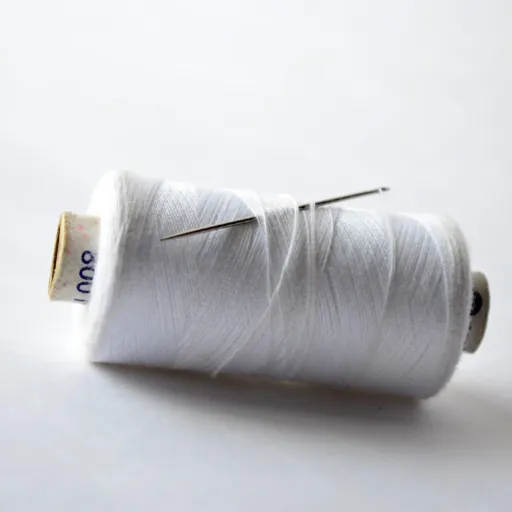
Acrylic yarn, appreciated for practicality, durability, cheapness, and versatility, sees fairly widespread utilization, including but not limited to:
Clothing and Apparel
Sweaters, scarves, hats, and gloves because it provides warmth and a silky smooth feel
Home Textiles
Blankets, rugs, and upholstery fabrics, providing comfort and durability to the space
Crafts and DIY Projects
Popular with crafters for knitting, crocheting, and color-rich manual projects
Outdoor Fabrics
Weather-resistant and sun-resistant, ideal for outdoor awnings and furniture coverings
This list, of course, represents only a small extent of such applications, placing acrylic yarn firmly in the field of practical usage in everyday life, with both function and artistry intertwined.
Crafting with Acrylic Yarn
For crafters of any experience, acrylic yarn is the ideal material, especially for beginners wanting to explore their creative sides. Since it is inexpensive and easy to work with, this yarn is suitable for almost any project. Beginner projects could include scarves, knitted hats, or simple throw blankets made by crochet. More complicated designs, ideal for those with an intermediate level, include amigurumi, decorative pillows, and wall hangings. The yarn lends itself well to a wide range of creative techniques and themes, making it a versatile material suitable for numerous craft possibilities.
Industrial Uses of Acrylic Fabric
| Industry | Application | Benefits |
|---|---|---|
| Outdoor Textiles | Awnings, canopies, patio furniture covers | Water, UV, and mold resistant |
| Automotive | Seat covers, convertible tops | Durability and weather resistance |
| Flooring | Industrial carpets and rugs | Cost-effective alternative to wool |
| Protective Wear | Industrial clothing for cold environments | Excellent insulating qualities |
As a versatile, durable, and cost-effective solution, acrylic fabric finds applications in numerous industries. With its ease of dyeing and good resistance to fading, acrylic fabric continues to gain strength.
Care Tips for Acrylic Yarn Items
Proper Care Guidelines
Washing
Use a gentle, warm cycle and avoid high heat exposure
Hand Wash Option
Protects the surface and extends yarn life
Detergents
Use gentle detergents, avoid chemicals or bleach
Drying
Lay flat to dry, avoid high heat dryers
Keep acrylic yarn articles on a gentle, warm cycle and avoid exposing them to high heat, as this can damage the fibers. The hand-wash method is definitely a good option for protecting the surface and extending the life of the yarn. Always use gentler detergents and never use any chemicals or bleach for washing. After washing, gently mold the item back into its original shape and lay it flat to dry. The high heat from dryers can melt the fibers or cause the article to lose its shape and dimensions. These steps help me keep my acrylic yarn articles soft, bright, and durable.
Reference Sources
Here are three professional and authoritative reference sources that you can use to verify the correctness of your article on “how is acrylic yarn made”:
“Cradle to Gate Environmental Impact Assessment of Acrylic Fiber Manufacturing”
The article published in SpringerLink provides an analysis of the environment in general, with a focus on acrylic fiber production, discussing spinning processes and solvent recovery systems, among other topics.
“Acrylic Fibres”
Discovered through Google Books, this source discusses the production processes of acrylic fibers, analyzing both the dry-spin method and the wet-spin method, as well as their applications in the textile industry.
“Characterization of Acrylic Fiber Structure”
The structural characteristics and wet spinning process of acrylic fiber are considered in this paper, which was introduced in the SAGE journal.









